The drive shaft is a rotating body with high speed and less support. The drive shaft of the machine tool is mainly used to transmit the power of the power source to the execution structure. Our common drive shaft is made of steel material, but now the drive shaft is used for There are new requirements for bending resistance, rotation accuracy and the maximum rotational speed that can be tolerated. However, the traditional metal materials have high mass and are easy to cause vibration, which will make the work process difficult. Carbon fiber composite drive shafts came into being.
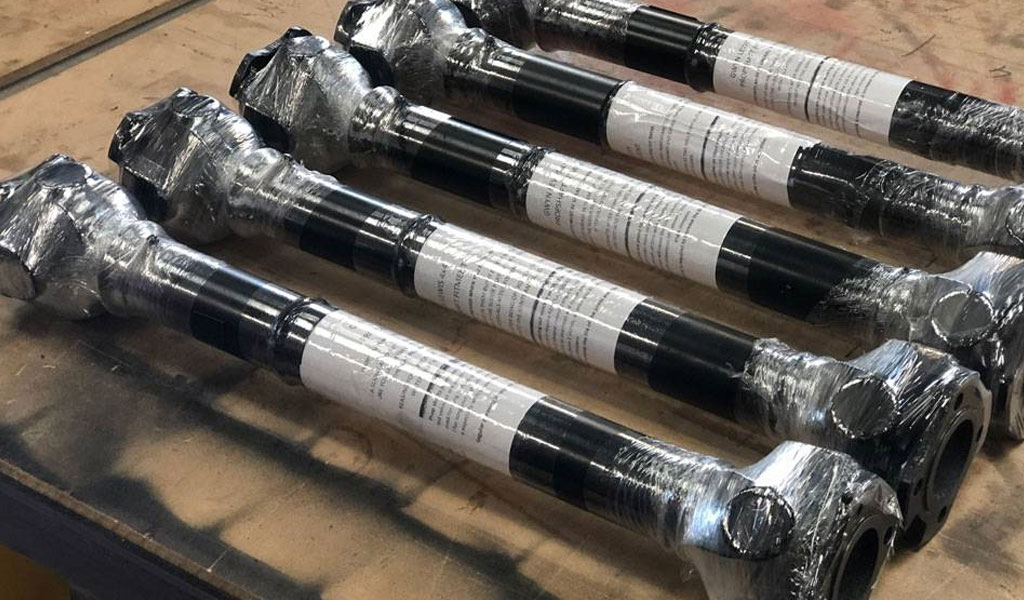
Carbon fiber composite material is an extremely light material with a density lower than that of aluminum. The drive shaft made by it can reduce its own weight. The inertia of the object is related to the quality of the object itself. The carbon fiber drive shaft has a small mass, and the inertia also decreases. The speed of starting and ending is accelerated, which can effectively improve work efficiency, and lightweight materials can reduce energy consumption. The bending strength of the carbon fiber composite material is about 8500/MPa, which shows that the carbon fiber composite material has strong bending resistance and can meet the new requirements of the drive shaft.
Molded carbon fiber composite drive shaft, quality comes first.
However, in the process of industrial production, production costs and production efficiency also need to be considered. Various factors determine the speed and scope of product promotion.This paper uses fiber winding molding process to prepare composite automobile transmission shaft. The winding forming process has a high degree of automation, easy operation, and strong continuous production capabilities, and is widely used in large-scale industrial production.
The automotive composite transmission shaft is an important component of the unsprung power of most automobiles. It can not only improve the driving ability of the entire vehicle, but also greatly enhance the operating performance of the vehicle. Reducing the unsprung weight can improve the vehicle’s acceleration performance, enhance the vehicle’s operability, and save some energy.
Design Of Flange Forks For Composite Automotive Transmission Shafts
The carbon fiber composite transmission shaft flange fork adopts reverse design, and the metal structure is re-optimized based on the metal three-dimensional drawings provided by an OEM. Based on comprehensive performance and operability, the carbon fiber composite flange fork is designed as shown in Figure 4-2.
As shown in Figure 4-2 (b), the inner diameter of the connecting part between the flange fork and the composite shaft tube is designed to be 50mm. When the core mold is placed, the core mold has no effect on both sides of the flange fork; Figure 4-2 ( c) When the inner diameter of the core film is designed to be 70mm, after the core film is placed, both sides of the flange fork will become very thin, resulting in the inability to support the mechanical properties required by the transmission shaft.
So we use a flange connection, first wrap the carbon fiber around the flange, and then bolt the flange fork to the flange. As shown in Figure 4-2(d), use a core film with an inner diameter of 50mm, design the inner diameter of the end where the flange fork is connected to the composite material to be 80mm, and put a carbon fiber with an inner diameter of 80mm between the two flange forks. Thin tube, the core is inserted into the flange fork, and then wound into shape.
In order to ensure strength, the metal material is structural steel, and because the flange fork structure is relatively complex, it is carved using a computer numerical control machine (CNC).
Static Torsion Test
According to the QC/T 523-1999 static torsion strength test standard, the static torsion machine of Shanghai Natiefu Transmission System Co., Ltd. is used. The processing fixture is connected to the carbon fiber composite transmission shaft for the static torsion machine; one end is fixed, and the other end is connected to the motor through the gear Slowly apply torsional load on the connection until the transmission shaft workpiece fails, and record its highest torque.
Dynamic Balancing Test
The unbalance of the transmission shaft will cause the lateral movement of the rotating shaft and subject the rotating shaft to unnecessary dynamic loads, which is not conducive to the normal operation of the rotating shaft. Most rotating shafts should be dynamically balanced. According to the QC/T 523-1999 residual unbalance test standard, place the drive shaft on the balance frame, transfer it with the moving balancer, then stop and observe the balance; then add a balance weight to the uneven place and calibrate Balance.
Natural Frequency Test
The drive shaft itself is an elastomer and will also vibrate freely when activated. After the elastic body is deformed, stress and torque are generated inside the medium. The secondary force and torque appear as the restoring force of the vibration system, which causes the elastic body to vibrate. Elastomer is a continuous medium, so the vibration motion propagates in the medium in the form of waves, and its motion equation should be based on the wave equation. It is also limited by the edges of the elastic body, so the vibration of the elastic body is actually a finite vibration, and the vibration in the elastic body is expressed in the form of a standing wave distribution. The multi-order natural frequencies of the workpiece can be obtained through tapping experiments.
Critical Speed Test
According to the QC/T 523-1999 critical speed test standard, the critical speed machine of Shanghai Natiefu Transmission System Co., Ltd. is used, and the processing fixture is connected to the carbon fiber composite transmission shaft and the critical speed machine; the set speed is 7000r/min, and the maximum safe amplitude is 1.6%, for testing.
Results And Discussion
This chapter mainly uses the fiber winding process to form carbon fiber composite automobile transmission shafts. The static torque, dynamic balance, natural frequency, critical speed, and fiber and resin distribution of carbon fiber composite automobile transmission shafts with different inner diameters are tested and compared. The main conclusions are as follows in conclusion:
- According to the quality of carbon fiber composite automobile transmission shafts designed according to different plans, the weight reduction effect of the transmission shaft with an inner diameter of 50mm is the most obvious, about 43.6%; the weight reduction effects of the transmission shafts with an inner diameter of 70mm and 80mm are relatively close. 28.6% and 27.1% respectively;
- By conducting static torsion tests on composite automotive drive shafts with inner diameters of 50mm and 80mm. The static torque of the drive shaft with an inner diameter of 50mm is 2525NM, which is slightly lower than the requirements of the automobile OEM. The static torque of the drive shaft with an inner diameter of 80mm is 6062NM, which is far greater than the technical requirements of the automobile OEM. The certification of the automobile drive shaft Absolutely safe during use.
- Perform dynamic balance calibration on three types of drive shafts. Through calibration, the dynamic unbalance of the three drive shafts is less than the technical requirement of less than 260g*mm proposed by the automobile OEM, and meets the standards.
- Test the natural frequencies of three types of composite automotive transmission shafts through the natural frequency tapping method. The natural frequencies of the drive shafts with inner diameters of 50 mm, 70 mm and 80 mm are obtained as 64.38Hz, 76.25Hz and 80.00Hz respectively; however, there are some errors between the results and the simulation results, and the simulation ratios are respectively 2.4, 2.1, and 2.1, the results tend to be relatively certain, and the natural frequency of the actual product can be roughly judged through simulation and measurement ratios.
Summarize
In the context of automobile lightweighting, in order to develop composite automobile transmission shafts with qualified performance, this article conducts a comparative analysis of the properties of two resin raw materials; as well as the modal analysis of carbon fiber composite transmission shafts with different lamination angles and different inner diameters. Analysis was carried out; composite transmission shafts with different inner diameters were prepared using fiber winding molding process and their performance was tested and analyzed.
Carbon fiber composite materials have the characteristics of energy absorption and vibration resistance, which can ensure low vibration during the working process. Moreover, carbon fiber composite materials have high specific strength and high specific modulus, and have excellent bearing capacity. In addition, carbon fiber composite materials also have fatigue resistance, which can maintain good stability during high-speed operation, work for a long time, and reduce unnecessary maintenance.
China Be-cu Prototype Material Technology Co., Ltd. is a leading private technology enterprise engaged in carbon fiber composite modification research and development and carbon fiber lightweight high-end equipment manufacturing. Provide development and manufacturing of carbon fiber composite materials and modification research and development services of carbon fiber materials for rail transit, automobile manufacturing, aerospace, robotics, industrial machinery, medical equipment and other fields. With its strong R&D and manufacturing level, the company is committed to reducing the weight of high-end equipment, leading the development of lightweight, and promoting technological innovation and progress!
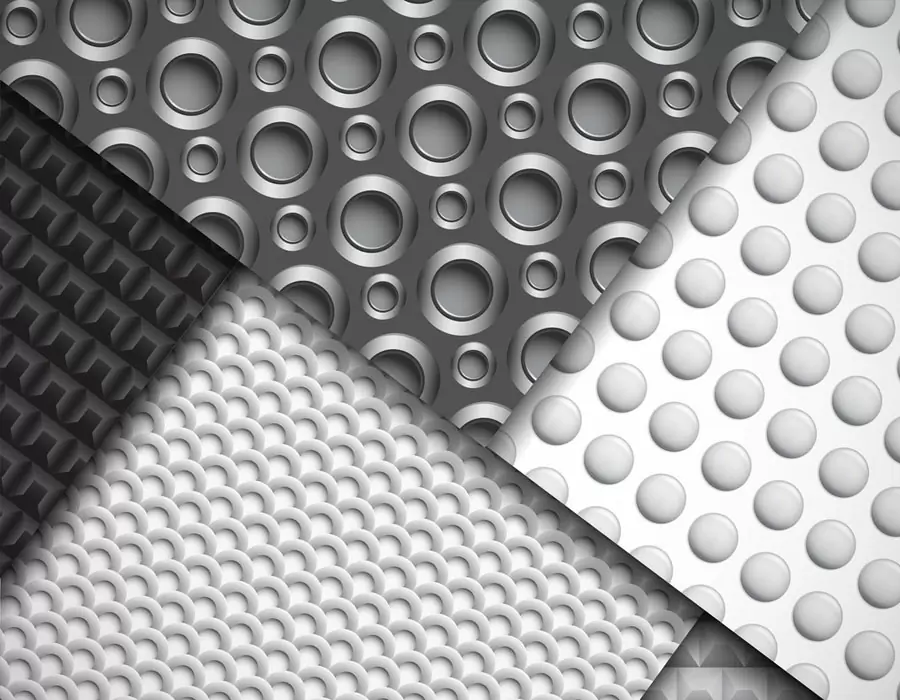
ISO 9001 certified. BE-CU Prototype Offering CNC machining carbon fiber and other manufacturing services for carbon fiber marterial. Various capabilities include notching, labeling, drilling carbon fiber, grinding, laser cutting carbon fiber, finishing, plating, marking, CNC milling carbon fiber and turning carbon fiber.We stock high quality 3k carbon fiber sheet in a variety of thickness, types and finish. Its a great material used in applications where light weight and strength are needed such as drones. Unlike other workshops, we have no min order and are often filling orders with a single part. We also don’t make you pay for the full sheet and you only get charged for what is used. With a large selection of material, you should find everything you need to make your project come to life. We are also able to handle larger production runs and provide a competitive pricing. If we don’t have the material or finish you require, we are more the willing to look at bringing it in for you.
What Is Carbon Fiber?Carbon fiber is made of polyacrylonitrile (PAN) (or pitch, viscose) and other organic fibers by carbonization (removal of most elements except carbon) by pyrolysis method under inert gas at high temperature above 1,000 °C. Inorganic polymer fibers with a carbon content of more than 90%.
-

3D Printing Continuous Fibres
-

3D Printing Short Fibre Filled Wires
-
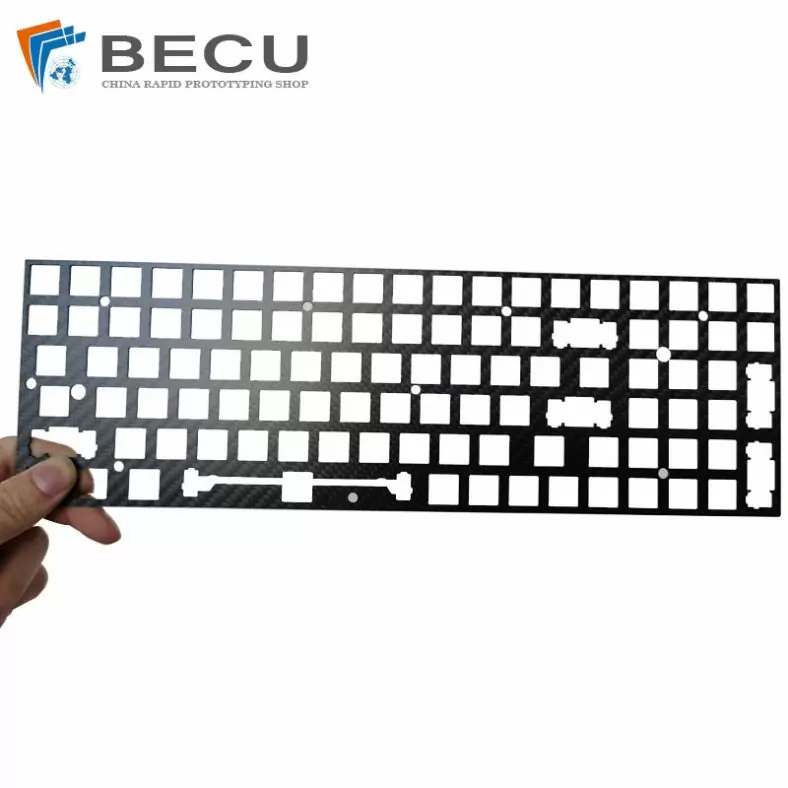
Laser Cutting Carbon Fiber Positioning Keyboard
-

Cnc Turning Industrial Copper-Aluminum Clad Carbon Fiber Machinery Parts
-
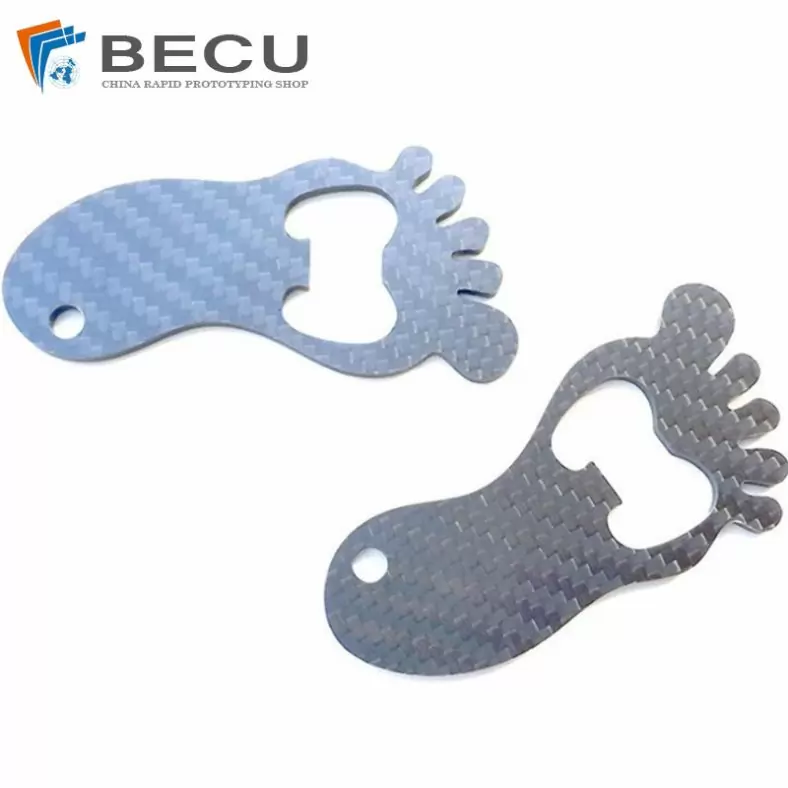
Carbon Fiber Luggage Tag Ornaments
-
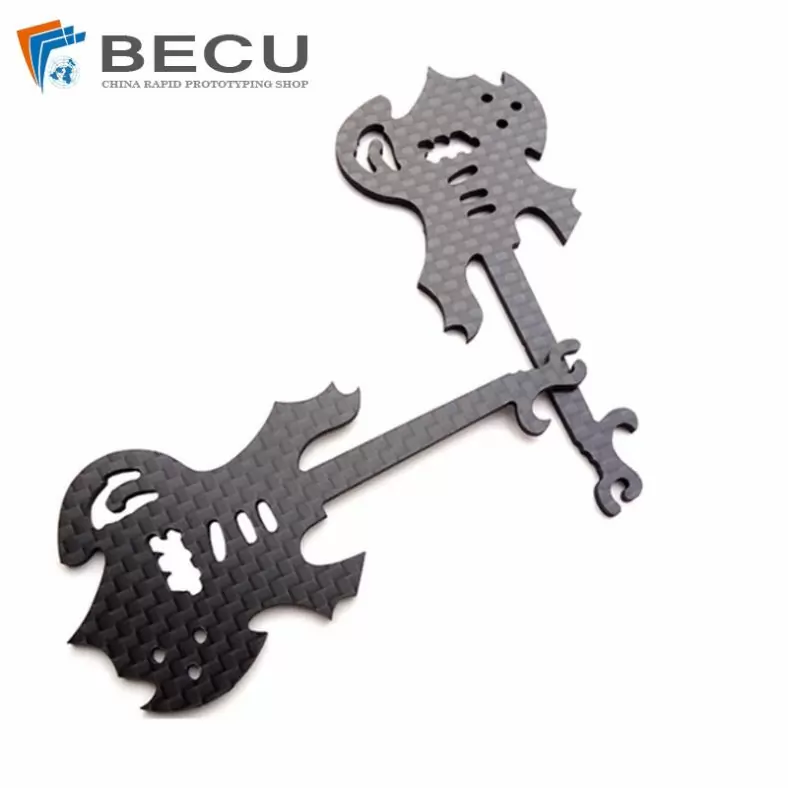
Laser Cutting Carbon Fiber Guitar Shape Crafts
-
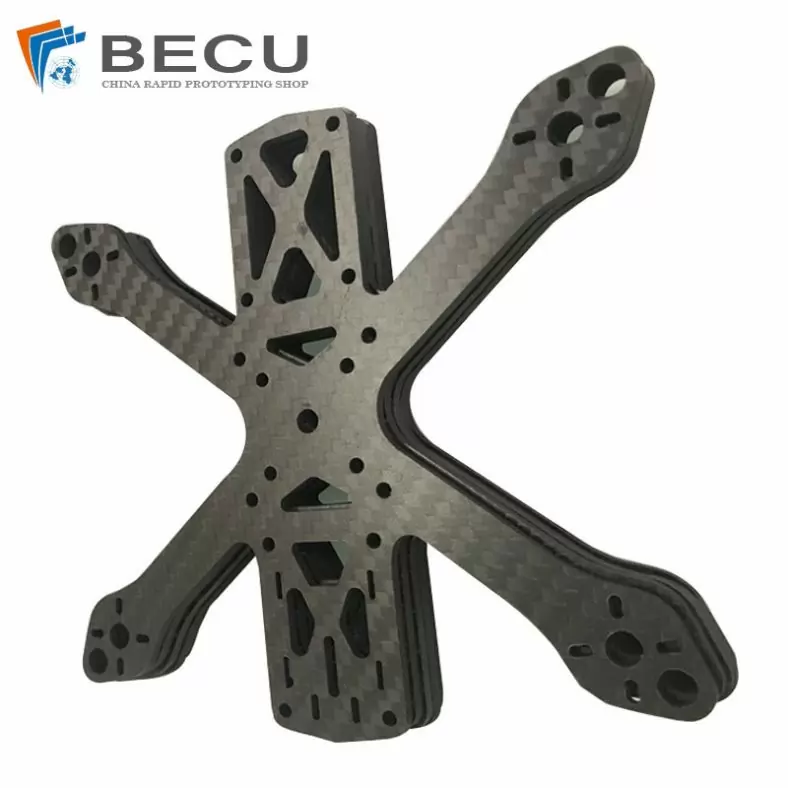
Laser Cutting Carbon Fiber Drone Rack
-
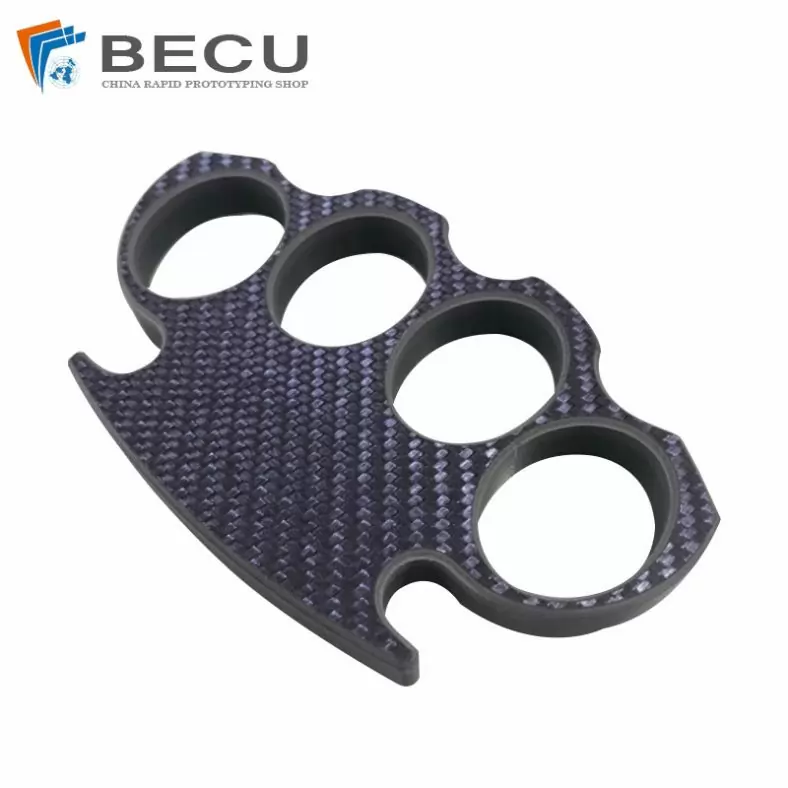
Cnc Milling Carbon Fiber Finger Buckle
